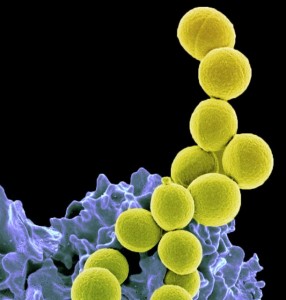FRIDAY, 18 MAY 2012
As the demand for smaller and more powerful electronics grows we are beginning to reach the limits of current manufacturing techniques. This new research hopes to harness the power of biology to produce cheap and environmentally friendly nanoelectronics on a large scale.The project, a long standing collaboration with the Tokyo University of Agriculture and Technology, used bacteria called Magnetospirillum magneticum which ‘eat’ iron in order to produce tiny crystals of magnetite; the most magnetic of all naturally occurring minerals found on Earth. These bacteria are naturally found in aquatic environments where they travel along the Earth’s magnetic lines.
Through studying how proteins synthesise and arrange these magnetite crystals within the bacterial cell, the researchers have been able to manipulate the resulting magnetic array. Currently, the method of sculpting small magnets out of larger ones makes it difficult to manufacture magnets of the required uniformity needed to store data. By using proteins from bacteria which naturally synthesise magnetite, all the hard work is essentially done for you.
In a similar vein, Masayoshi Tanaka from the Tokyo University of Agriculture and Technology has synthesised microscopic electrical “nanowires” from particles of copper indium sulphide and zinc sulphide. These ‘quantum dots’ are encased in molecules of fat and are capable of conducting electricity. It is hoped that these nanowires will soon be capable of connecting components within a “biological computer”.
It appears that by harnessing a naturally occurring toolbox of proteins and chemicals, scientists might one day be capable of “growing” computer components from scratch.
Written by Nicola Hodson
DOI: 10.1002/smll.201102446

